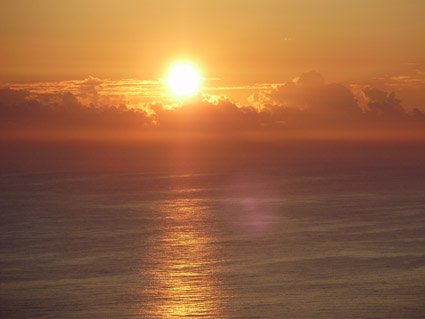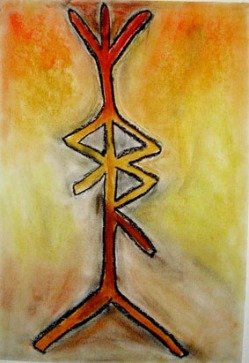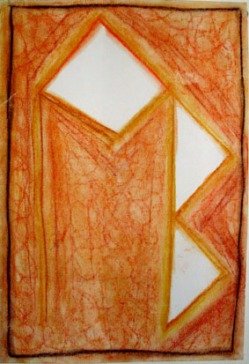Since I returned from my travels I’ve meditated almost every day. It’s a fantastic practice and I thought I’d describe what I do and how it helps.
The practice is simple enough. I set a timer for 20 minutes. I lie down in a secluded space – under the shade of trees is good, or if it is cold then I just get under the covers of my bed.
I try to focus on my breath. I turn my attention to the physical sensation of inhaling… and then the physical sensation of exhaling. I let my breathing slow down and become more regular. It can be helpful to think the word “in” as I inhale and “out” as I exhale.
Now the thing about trying to focus your attention on one place is that if your mind is undisciplined – well you’ll be all over the shop. All sorts of thoughts are likely to flood your mind – about your shopping list, the book you are reading, the arguments your friends are having, your plans for the day.
These thoughts will pull your attention away from attending to your breathing. So here comes the key to effective meditation.
Your only task when your mind wanders is to notice that your mind has wandered and tell yourself “back to the breath” and return your focus. That’s all. The thing is, it is totally ok for your mind to wander: that gives you the opportunities you need to practice noticing your own thoughts and redirecting them.
In other words, effective meditation doesn’t make some lofty goal of stillness or oneness the goal – though my method certainly enables me to achieve such a state sometimes. Rather, the goal is just to notice that your mind has wandered and return to the breath.
Sometimes, often, you won’t stay focussed for more than a breath or two before you get distracted, no matter how experienced you are; or sometimes thoughts will quietly worm away under your breath focus. This is good – you are learning the landscape of your mind at the same time as you train the beast. Sometimes valuable insights might even come from this, though the time to dwell on them is after your 20 minutes is done.
There are various Zen stories about the important of coming back to your focus point no matter where your mind goes: “Master, I was meditating and the Buddha appeared and told me that I am the anointed saviour of mankind”, says the student. “That’s nothing to worry about. Keep returning to your breath and it will go away”, replies the master.
This is a good attitude to have. If you really must, you can still entertain your megalomania later. But when you are meditating, meditate.
You don’t have to focus on your breath for this general principle to work. Sweyn Plowright, in his book True Helm, offers a very effective meditation practice utilising the rune Isa, with a similar approach to the one I’ve outlined here. I recommend it, in fact. It’s very classy.
I should also add that I didn’t invent the meditation method described here. It is loosely adapted from various different traditions and modified by my experimentation.
Now, you might be wondering how I know that the meditation method outlined here is effective.
Well it definitely takes a while to get the more dramatic results, but here are some of the benefits I have been experiencing since I renewed my daily meditation practice a month ago:
I am more alert; I think clearer, I’m more able to understand things around me and even my sensory perception seems clearer and more detailed;
I need less sleep; sometimes I can use a meditation session to totally recharge my batteries during a busy day;
I feel much less anxious – more confident and relaxed;
I pay much less attention to the kinds of unconstructive self-critical voices most of us fall prey to at times;
I have become less dogmatic, more open to different points of view, and much less emotionally provoked when I encounter views that contrast strongly with my own (this has been a goal for a little while now, as discussed elsewhere in this journal);
I am more focussed – when I really need to get something done, I can do it;
I’m becoming more disciplined but also less up-tight about maintaining my discipline – I’m more comfortable with resting and taking time out yet I think I’m just as productive.
The real litmus test came over this last weekend, when I recorded all the bass for the next Ironwood album. I usually find recording to be stressful, unpleasant, emotionally taxing and, all in all, something to be feared.
This time around though I felt so calm and relaxed. When my emotions started to get away from me I could see it immediately and respond. I noticed that I tend to hold my breath when I’m feeling under pressure and that if I consciously let go of that armour then I become both more relaxed and more competent.
The consequence was that despite this being the most complex and technical material I’ve ever recorded I finished up right on schedule, didn’t rush, pulled out the best studio performances of my life, was totally chill and relaxed, and basically had a monstrously enjoyable time.
Instead of an onerous task, recording was a pure joy. I particularly enjoyed watching myself skilfully manage my own behaviour, thoughts and feelings, gently steering myself along the path.
And folks, that is after only a month of meditating daily, 20 minutes a day. I’m really, really hooked now. I’ve written before in this journal about the distinction between heart and will based living; how the former is so much more powerful yet is so hard to access for those of us raised in a more or less nihilistic modern context. Well meditation is really opening the gates of my heart and unleashing some serious power.
Oh, and to top it all off, on the weekend I also wrote a really cool poem about Odin and my ancestors.
It can be hard, of course, to get into a groove with meditation, but really to do it effectively you need to keep up the practice. Sometimes you might have to skip a day, but believe me, it gets easier to discipline yourself the longer you do it.
If you think you don’t have time – trust me, you’ll start to function so much better after a while that those 20 minutes spent meditating will end up saving you at least that much, maybe a lot more, out of the rest of your day.
And I’ll say again – it doesn’t matter how much your mind wanderes. It doesn’t matter if you don’t reach some transcendental state. Just keep doing it and you’ll find it hard to stop yourself from deriving benefit from the practice.
I’m laying down the challenge folks. Meditation – get into it!

 This first rune sigil is one of my “don’t remember what it means” specials. I used an Indian snake skin tambourine to send it off, dancing, singing, drumming, you name it, until I was frothing and spasming and seething madly. Odin appeared at various points and lectured me about various things I didn’t understanding – perhaps related somehow to the meaning of the bind rune.
This first rune sigil is one of my “don’t remember what it means” specials. I used an Indian snake skin tambourine to send it off, dancing, singing, drumming, you name it, until I was frothing and spasming and seething madly. Odin appeared at various points and lectured me about various things I didn’t understanding – perhaps related somehow to the meaning of the bind rune. I’m no Sheehan but I have a few tricks up my sleeve. The magic kicked in really hard once I got my feet stamping in 4:4 time, then my left hand cutting across that on the tambourine in what I think was a 12:8, and then my right hand banging away on the tambourine for a while in 5:4, then 7:8 and 9:8. I used my forearms to loosely hold the tambourine across my chest as I did this so that the rhythms were very physical, tangible, for me.
I’m no Sheehan but I have a few tricks up my sleeve. The magic kicked in really hard once I got my feet stamping in 4:4 time, then my left hand cutting across that on the tambourine in what I think was a 12:8, and then my right hand banging away on the tambourine for a while in 5:4, then 7:8 and 9:8. I used my forearms to loosely hold the tambourine across my chest as I did this so that the rhythms were very physical, tangible, for me.